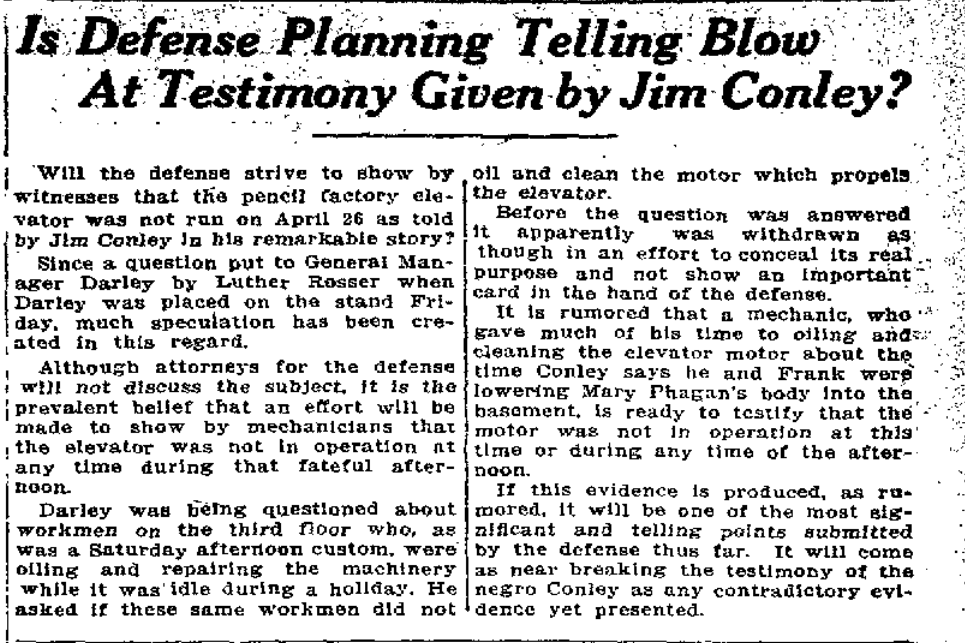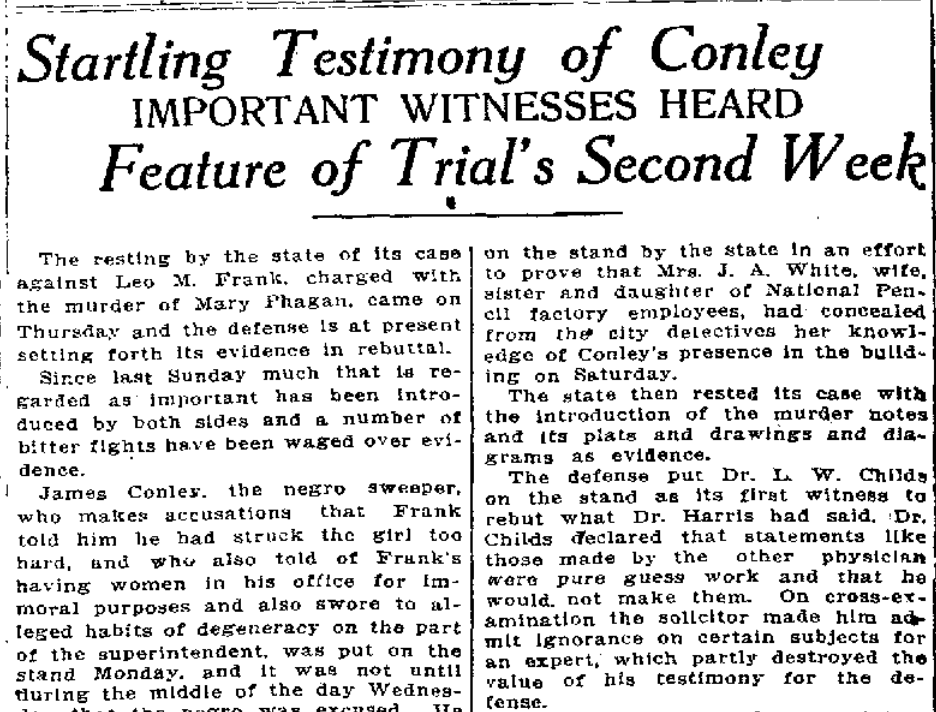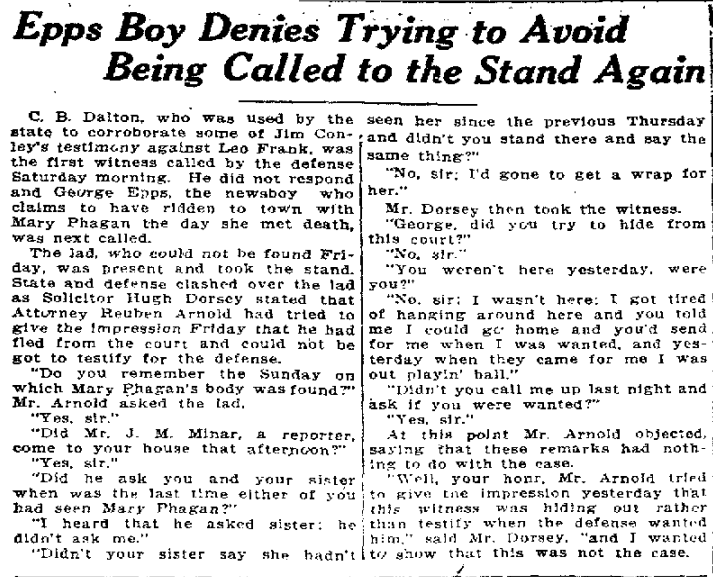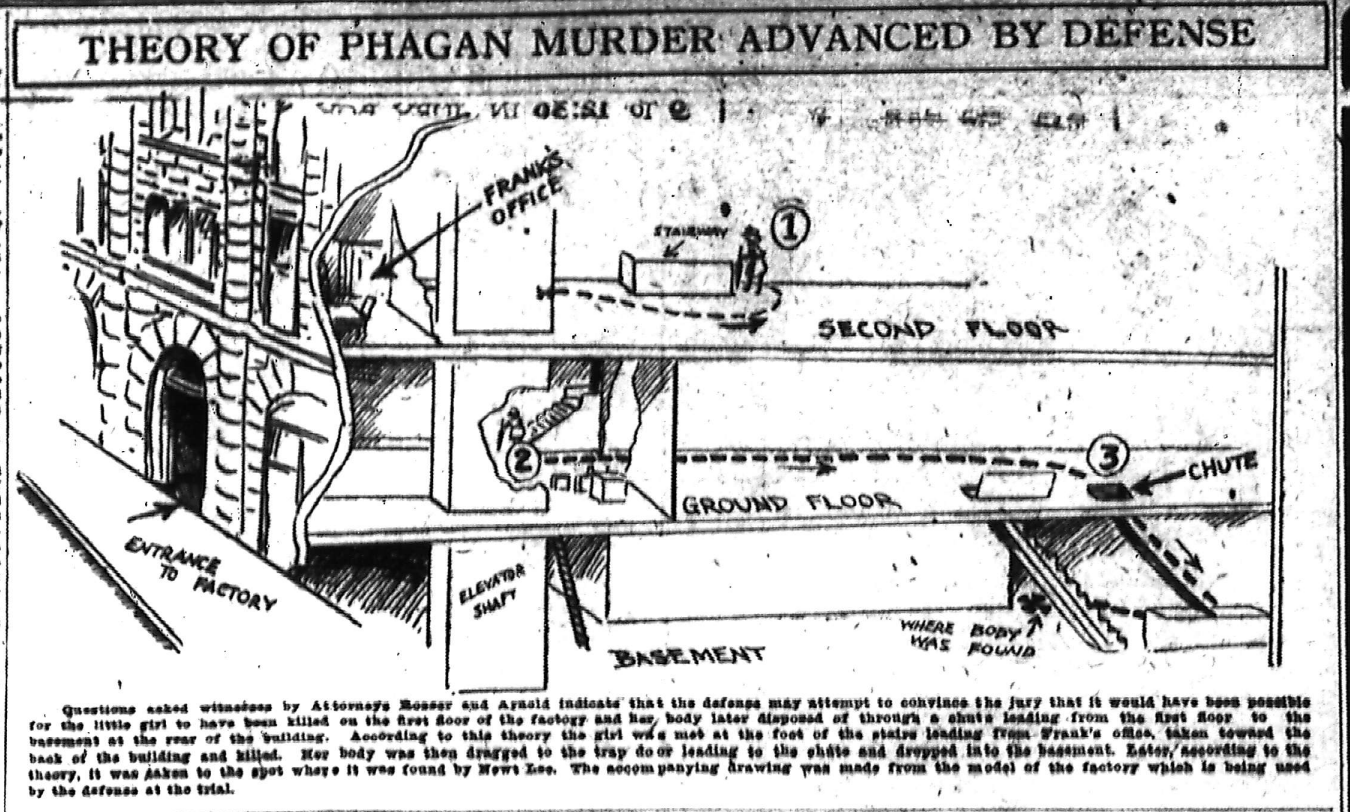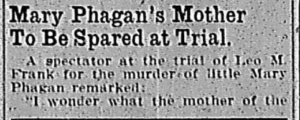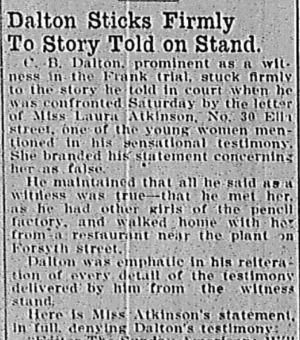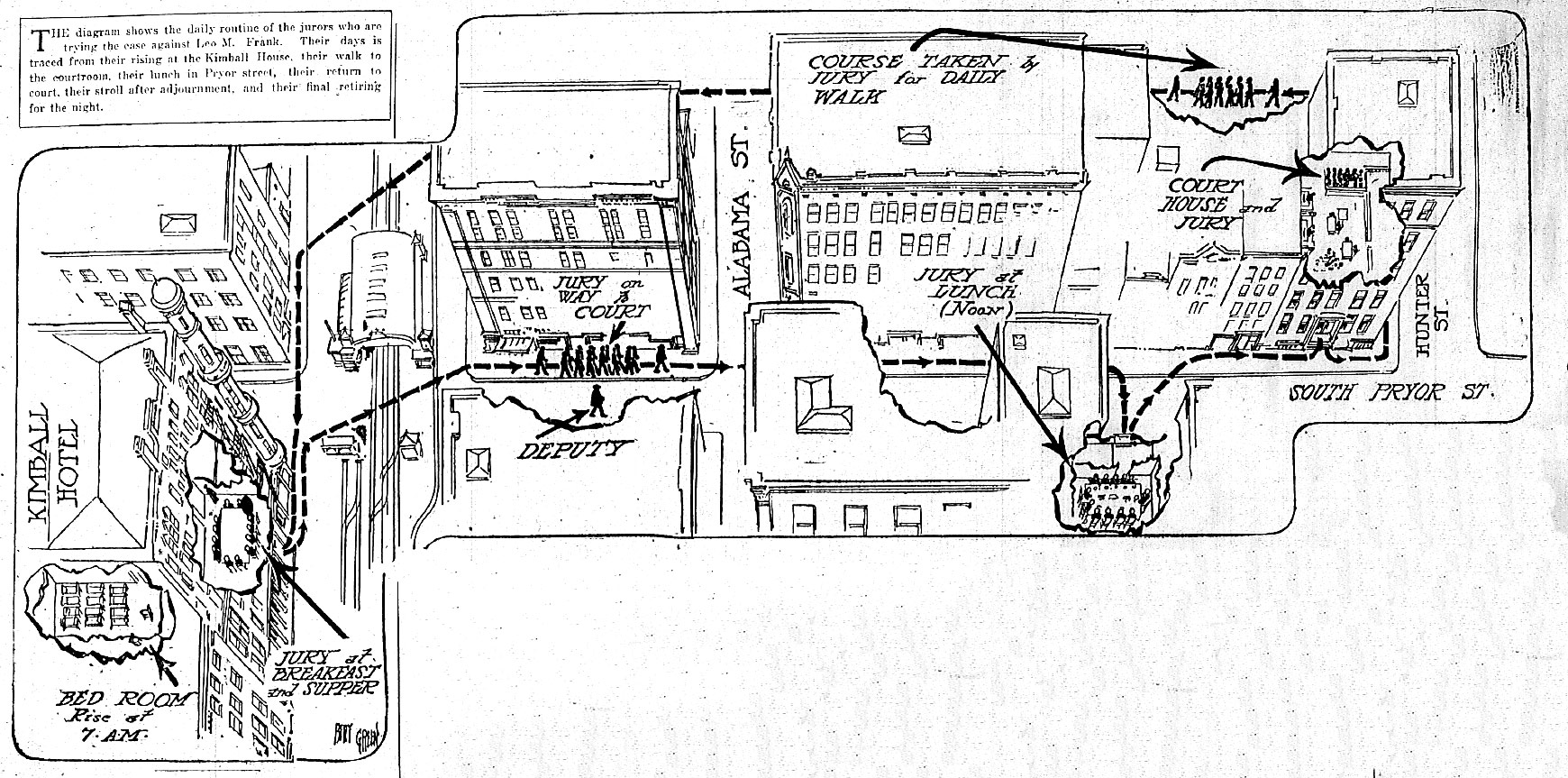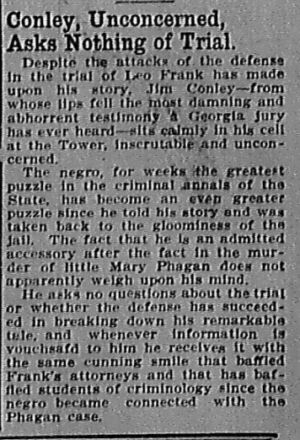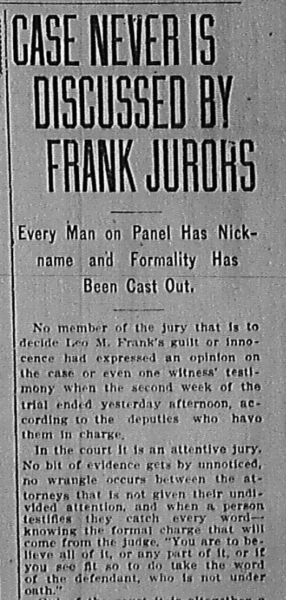Another in our series of new transcriptions of contemporary articles on the Leo Frank case.
Atlanta Constitution
August 10th, 1913
Will the defense strive to show by witnesses that the pencil factory elevator was not run on April 26 as told by Jim Conley in his remarkable story?
Since a question put to General Manager Darley by Luther Rosser when Darley was placed on the tand Friday, much speculation has been created in this regard.
Although attorneys for the defense will not discuss the subject, it is the prevalent belief that an effort will be made to show by mechanicians that the elevator was not in operation at any time during that fateful afternoon.
Darley was being questioned about workmen on the third floor who, as was a Saturday afternoon custom, were oiling and repairing the machinery while it was idle during a holiday. He asked if these same workmen did not oil and clean the motor which propels the elevator.
Before the question was answered it apparently was withdrawn as though in an effort to conceal its real purpose and not show an important card in the hand of the defense.
It is rumored that a mechanic, who gave much of his time to oiling and cleaning the elevator motor about the time Conley says he and Frank were lowering Mary Phagan’s body into the basement, is ready to testify that the motor was not in operation at this time or during any time of the afternoon.
If this evidence is produced, as rumored, it will be one of the most significant and telling points submitted by the defense thus far. It will come as near breaking the testimony of the negro Conley as any contradictory evidence yet presented.
* * *

